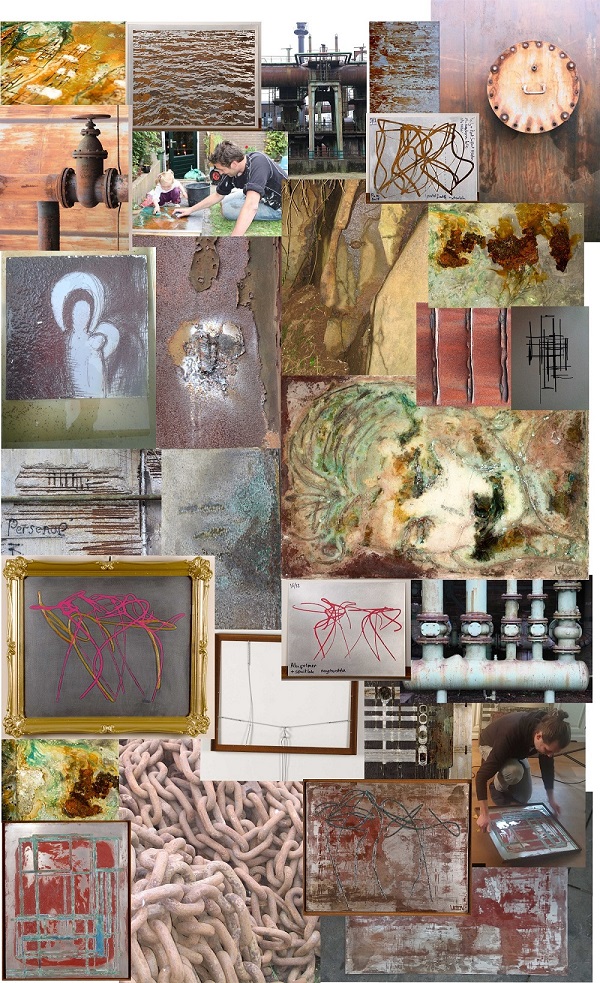Compositions in corrosion
The series “Compositions in corrosion” attempt to interpret our struggle with time and chance, using probabilistic computer programming combined with traditional painting as well as experimental patination.d water is eventually broken by fixing the fragility of the work in synthetic resin.
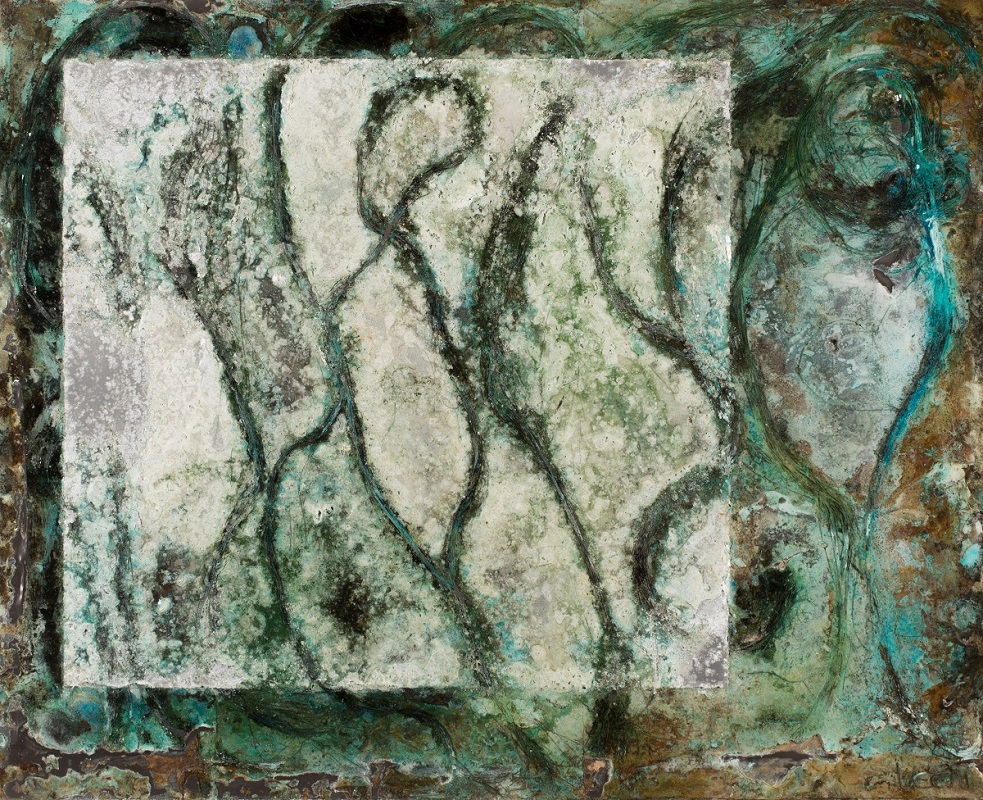
Experiments touching sulphur and mercury
Compositions in corrosion depict the fragility of culture under the influence of natural forces. Purified metals that degrade within a frame, such as lead roofing, tin jars, and electric wiring. Sometimes organic shapes proliferate as mycelia, or the acids patina the material like a bronze sculpture. Sometimes you may see organic shapes, proliferating as mycelia, then the acids patina the material like a bronze sculpture. The end-result brings three-dimensional structures which slowly weather or accelerate oxidation. The contact with air and water is eventually broken by fixing the fragility of the work in synthetic resin.
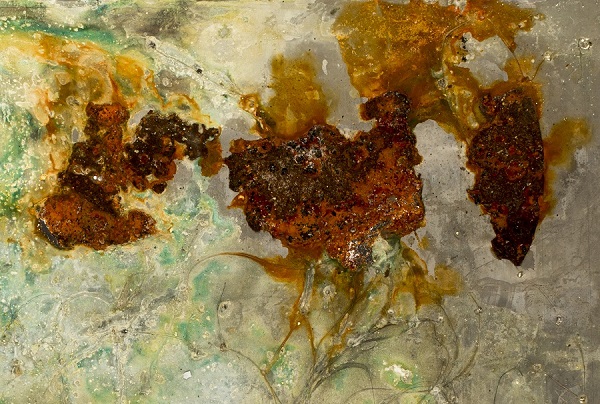
The compositions represent man’s struggle with chance, and at it’s awe-inspiring power.
A new disorder
There appears to be a universal motion towards a state of disorder, producing patterns from which we may perceive a notion of time. Life responds to the stress of disintegration by investing energy and material as to adapt to every niche that can possibly be found. Man further opposes the degradation of the inorganic and has produced an inconceivable number of objects over the course of history. In recent, times the diversity, volume and persistence of the products of human effort seem to have grown to such a scale that a state of disorder is being approached from a different direction, a new disorder.
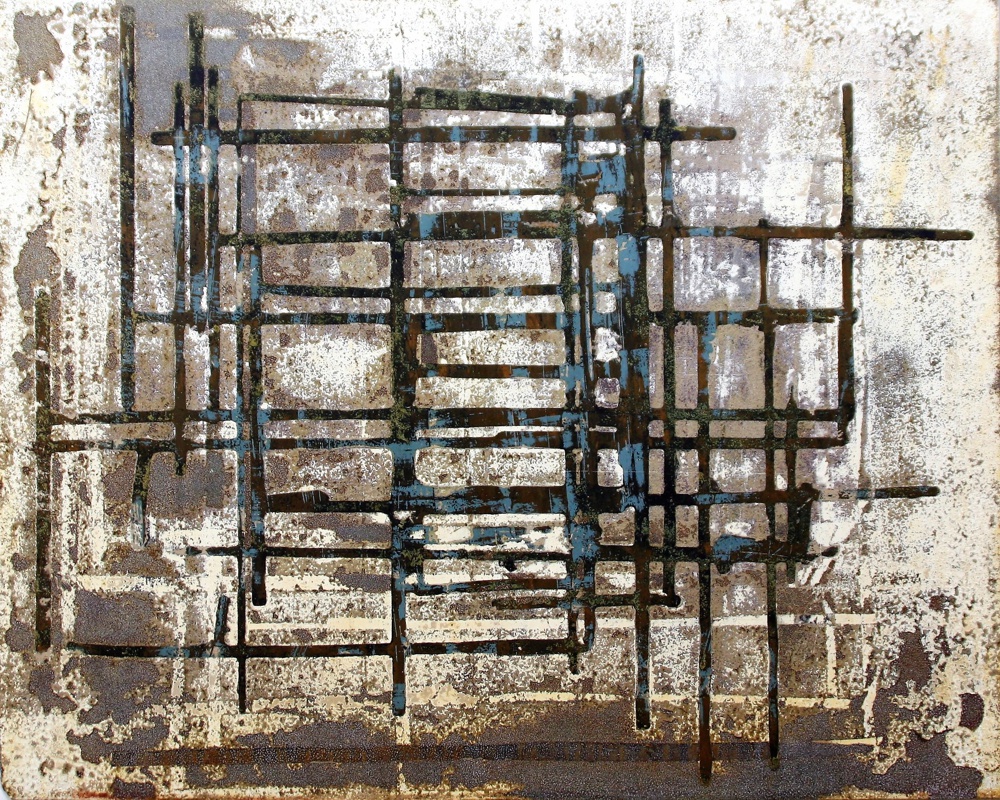
Any order can be understood as the evaluation of probalistic processes by an observer. In my work, the tension of the order-disorder paradox is sometimes increased using algorithmic generation and evaluation of compositions.
Transmutation of imagination
Man is inclined to imitate. Conceptions that appear to arise out of thin air are already concealed within the mind, hidden, fragmentary, a tissue of the ideas of others, which in turn are borrowed from others. Is a work of art simply a product of the artist’s being and explicable by personal history, past impressions, and the people he has met? The compositions in corrosion attempt to escape the personal projection and transmute images that are rooted in reality. Only partly controlled by shape and material, the effect of the acids on metals gives surprising effects. The method results in a tension between structure and arbitrariness and searches for essences of creativity.
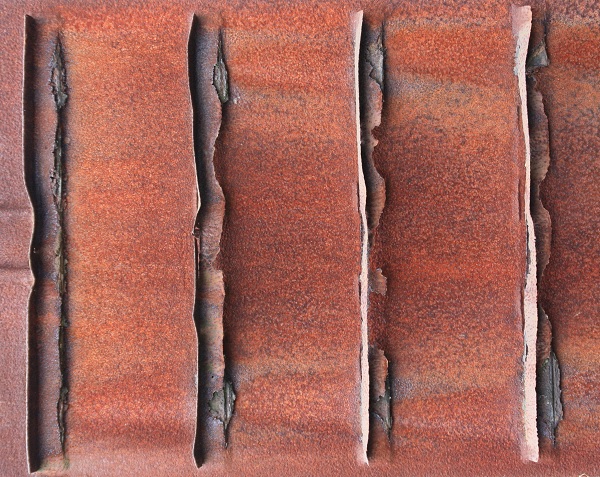
Process
In order to illustrate the realization of the works time-lapse recordings of the process have been made. On a lead base copper, alumium, and tin lines and forms are applied. Then acids are used to corrode the materials. The process is gradually adjusted by adding or removing acids and oxides.
